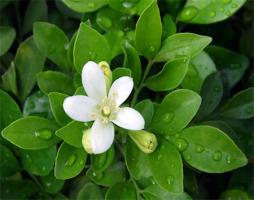How Many Planted Trees Each Year Die
Planting trees is a noble act that can help mitigate the effects of climate change, reduce pollution, and provide habitat for wildlife. However, not all planted trees survive and thrive. In this article, we will explore the factors that contribute to tree mortality and estimate how many planted trees die each year.
Factors Contributing to Tree Mortality
Tree mortality can have numerous causes, including diseases, pests, drought, extreme temperatures, poor soil quality, inadequate water supply, and human activities. Some of the most common factors that affect planted trees include:
Improper planting techniques
Root damage during excavation or transportation
Inadequate soil preparation and amendments
Over or underwatering
Lack of maintenance and care
Inappropriate tree species selection for the site conditions
Climate change-induced heatwaves, droughts, and storms
Pests and diseases, such as emerald ash borer and oak wilt
When one or more of these factors are present, the survival rate of planted trees decreases. For example, studies have shown that improper planting techniques, such as planting too deeply, can reduce the success rate of tree planting by up to 60%.
Estimating the Annual Tree Mortality Rate
It is difficult to determine the exact number of planted trees that die each year since the survival rate varies based on the location, species, and management practices. The mortality rate can range from less than 10% to over 50%, according to some estimates.
One study published in the Journal of Environmental Management analyzed the survival rate of street trees in San Francisco over three years. The researchers found that the overall survival rate was 78%, with some species having a survival rate of over 90% and others as low as 61%. Another study conducted in Denver, Colorado, estimated that the mortality rate of newly planted trees ranges from 7.5% to 21%.
Based on these and other studies, we can estimate that between 10% and 30% of planted trees die each year in urban areas, parks, and forests. In some areas with challenging growing conditions, such as deserts, the mortality rate may be even higher.
Reducing Tree Mortality and Ensuring Tree Survival
To improve the success rate of tree planting and reduce tree mortality, it is important to follow proper planting techniques and provide adequate care and maintenance. Here are some tips:
Select appropriate tree species that are adapted to the site conditions, such as soil type, temperature, precipitation, and light availability.
Prepare the planting site by removing weeds, rocks, and debris, and loosening the soil to improve root growth.
Add organic matter, such as compost or mulch, to improve soil quality and water retention.
Plant the tree at the right depth, with the root flare level with the soil surface.
Water the tree regularly, especially during hot and dry periods, but avoid overwatering or letting the soil dry out completely.
Protect the tree from pests and diseases by using appropriate measures, such as pruning, spraying, or installing barriers.
Regularly inspect the tree for signs of stress or damage and take corrective action if necessary.
By following these best practices, we can enhance the survival rate of planted trees and ensure that they provide their full range of benefits to the environment and society for generations to come.
Conclusion
Planting trees is an important way to combat climate change and enhance the quality of life in our communities. However, ensuring the survival and growth of planted trees requires careful consideration of the site conditions, species selection, and management practices. While it is difficult to estimate the exact number of trees that die each year after planting, we can improve the success rate by using best practices and innovations in tree planting and care.

 how many times do yo...
how many times do yo... how many planted tre...
how many planted tre... how many pine trees ...
how many pine trees ... how many pecan trees...
how many pecan trees... how many plants comp...
how many plants comp... how many plants can ...
how many plants can ... how many plants and ...
how many plants and ... how many pepper plan...
how many pepper plan...




























